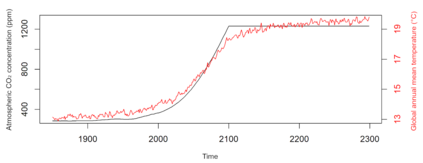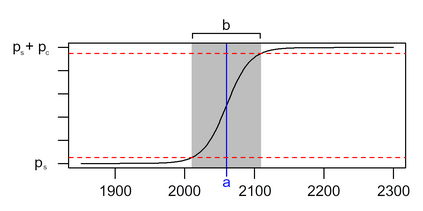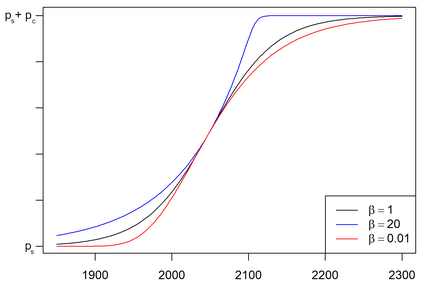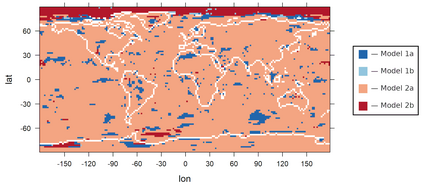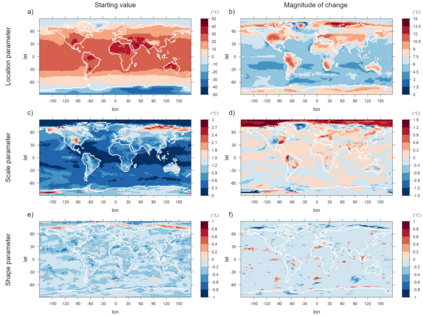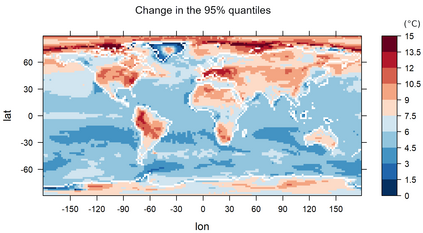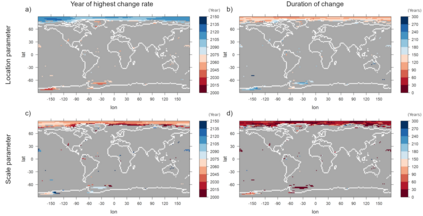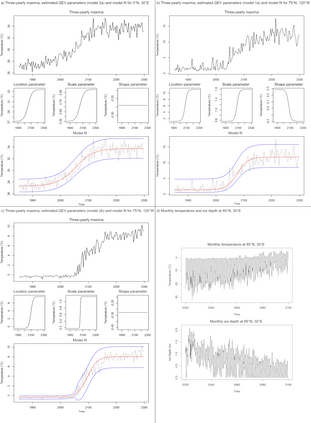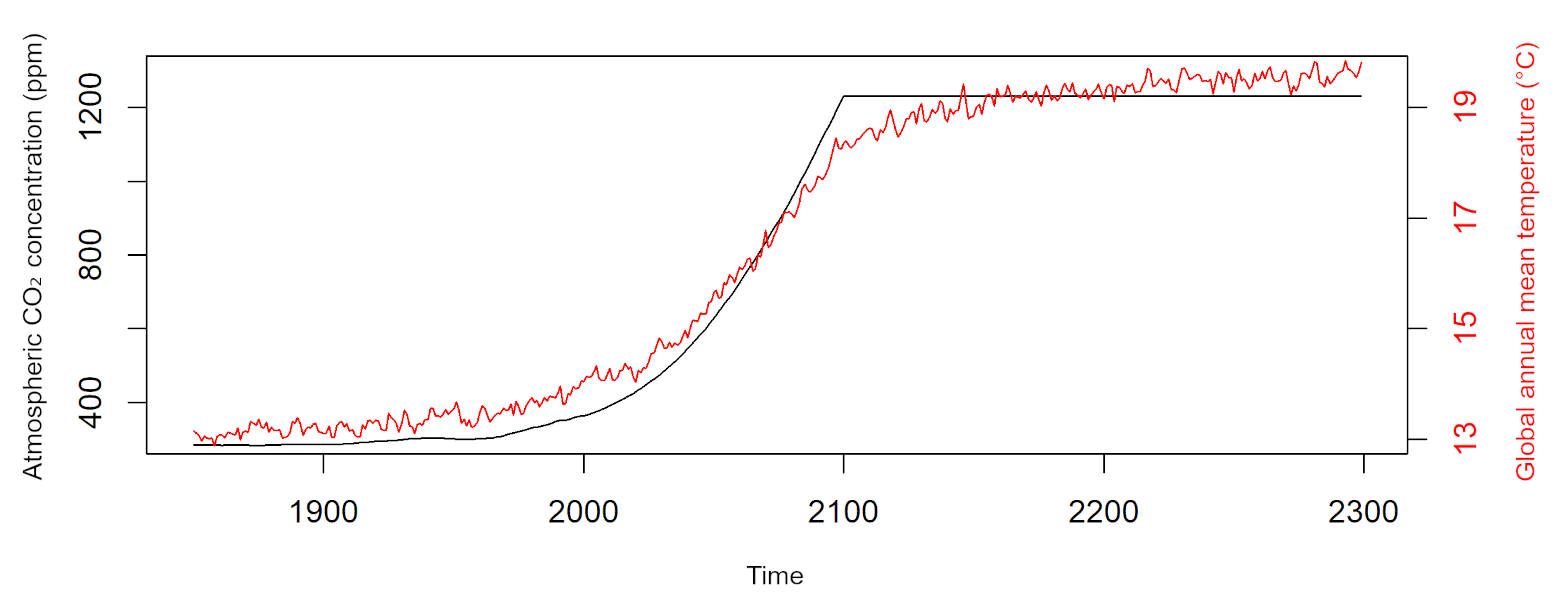We present a new approach to modeling the future development of extreme temperatures globally and on a long time-scale by using non-stationary generalized extreme value distributions in combination with logistic functions. This approach is applied to data from the fully coupled climate model AWI-ESM. It enables us to investigate how extremes will change depending on the geographic location not only in terms of the magnitude, but also in terms of the timing of the changes. We observe that in general, changes in extremes are stronger and more rapid over land masses than over oceans. In addition, our models differentiate between changes in mean, in variability and in distributional shape, allowing for developments in these statistics to take place independently and at different times. Different models are presented and the Bayesian Information Criterion is used for model selection. It turns out that in most regions, changes in mean and variance take place simultaneously while the shape parameter of the distribution is predicted to stay constant. In the Arctic region, however, a different picture emerges: There, climate variability drastically and abruptly increases around 2050 due to the melting of ice, whereas changes in the mean values take longer and come into effect later.
翻译:我们提出了一个新的方法,通过使用非静止的、普遍化的极端值分布以及后勤功能,来模拟全球和长时间范围内极端温度的未来发展,同时使用非静止的、普遍化的极端值分布以及后勤功能。这个方法适用于完全结合的气候模型AWI-ESM的数据。它使我们能够调查极端将如何变化,不仅取决于地理位置的规模,而且取决于变化的时间安排。我们观察到,总体而言,极端的变化比陆地群的面积要强和快得多。此外,我们的模型区分了平均值、可变性和分布形状的变化,使得这些统计数据的发展能够独立地在不同的时间进行。提出了不同的模型,并使用贝叶西亚信息标准进行模型选择。结果显示,在大多数区域,在分布的形状参数预计保持不变的情况下,平均和差异会同时发生。然而,在北极区域,出现了不同的图象:由于冰融融化,气候变异性在2050年前后急剧和突然增加,而平均值的变化则会更长,以后就会生效。

